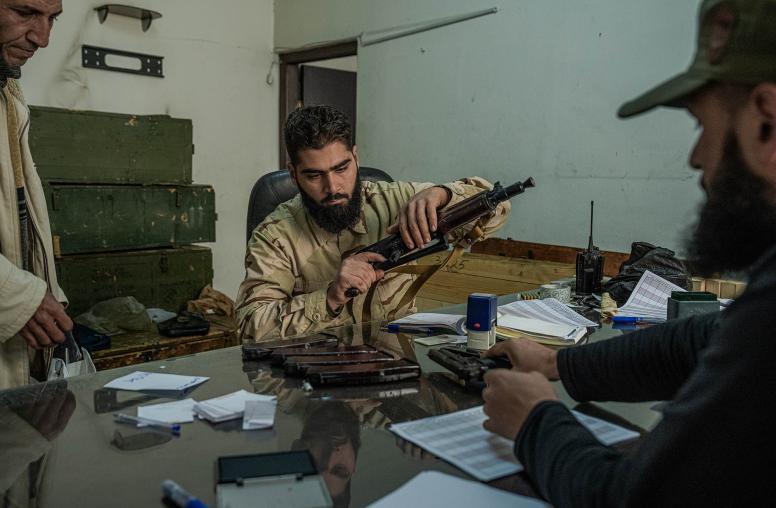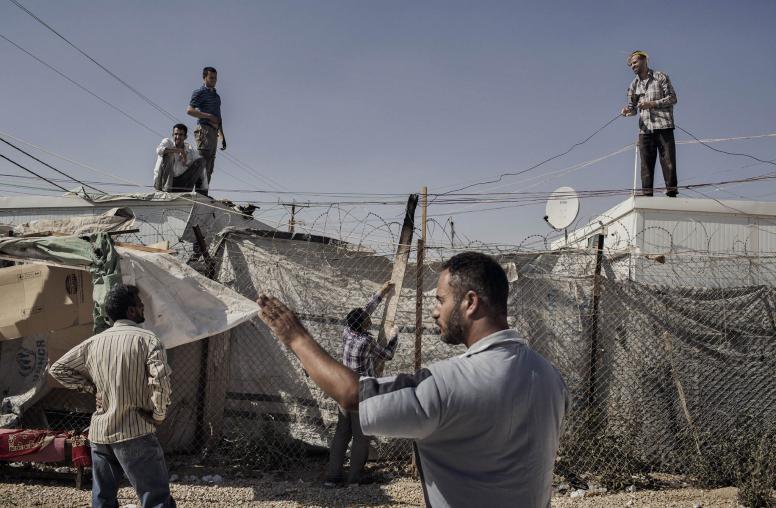A Syrian School’s Healing Powers
After a long bus ride set against the mountains of Syria, we finally arrived at a school outside Hatay in southern Turkey. Once there, a smiling, middle-aged woman greeted us at the gate: “Welcome to our school.”

Samiha is from Aleppo. Now in her fifties, she spent eight years in prison in the 1980s, punished by the Syrian regime under former President Hafez al-Assad. She, like many other women her age, was detained for political reasons: some for the ideology they espoused, others for their husbands’ political work, and some, like Samiha, for their activism.
And by working with children, they find that they, too, are beginning to heal. The childrens’ energy becomes their energy, and they are able to focus on hope for the future.
After fleeing Syria in 2013, Samiha was disturbed by the many Syrian refugee children she met who were living in villages in Turkey with nothing to do all day long. Inspired and committed to this cause, she and another former detainee, Heba, decided to start a school. Run by educated Syrian volunteer instructors, the school now offers classes for more than one hundred and twenty first through ninth grade students living just outside Hatay in southern Turkey. Samiha and her energetic volunteers represent a growing movement of Syrians, who in the face of trauma and hopelessness, turn their energies and grief to working with refugee children. And by working with children, they find that they, too, are beginning to heal. The childrens’ energy becomes their energy, and they are able to focus on hope for the future.
“It is an immediate reward,” said Samir, a math instructor at the school. In his late 30s, Samir is handsome with deep brown eyes, an easy smile and a natural charisma, but there is some lingering sadness in him. A former lecturer at the University of Lattakia, he was captured after the uprisings began. After his release from prison, he crossed the border and joined the school. We heard that he was tortured.
The reward Samir refers to is the joy of working with kids – a little instruction can yield immediate results for a child. Samir has found comfort in the laughter and joy that permeates the school. When the kids ask him questions, his eyes glow. He is an instructor again.
Samiha first announced the idea of a school in the village where the refugee children were living on a Tuesday afternoon. On Wednesday when she arrived at the village, the children were already lined up waiting to join.
Every classroom that we visited was determined to show us how much they knew: the seventh graders explained complicated Arabic grammar and the first graders sang a traditional Syrian song about little yellow chicks. “The little chicks, they are so happy around their mother,” they sing. “When they drink water, they lift their heads to the sky and thank God for the water.”
Many children asked us shyly if we really had come from America and what it was like there. They all asked for more time to play sports. In a new country, just miles from their old homes, they sing, laugh, tease, and play games on cell phones.
The chalkboard is half-sized, students sit in old desks, and the classrooms themselves are temporary structures. Everything is donation based, supplies given by visitors from Project Amal ou Salam, George Mason University, international agencies like UNICEF and the Syrian Diaspora around the world.
Such an environment provides comfort to the adults who suffered in Syria. The laughter of children, who need exceptionally little to be happy, now drowns out painful memories. “We wake up in the morning and feel like we are doing something worthwhile,” said one.
As we share the fresh baked bread prepared in the next village, we can sense that the smell of the bread and the communal dining is just like home. Eating together, playing together, learning together, this school has provided these Syrian teachers with a renewed sense of community – a home in a foreign land. ”For now, I am happy that there is some effect of me being here,” said Samir. “It gives me a boost to continue my daily life.”
As we drove away, we looked back through the window at the shrinking sunset, watching the mountains recede, and Samir and Samiha are waving. Then they turn to the children and usher them inside, their smiles intact.
Hind Kabawat is a senior program officer for Syria in the Center for Middle East and Africa. Aparna Ramanan is a senior program assistant for the Center for Applied Research on Conflict. The two recently returned from conducting a Syrian women’s conference in Gaziantep, Turkey. The conference brought together women of various faiths, ethnicities, backgrounds, and political ideologies from all parts of Syria.


